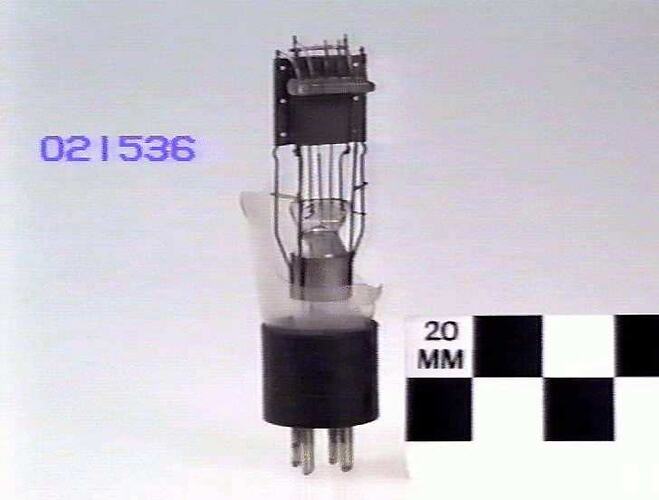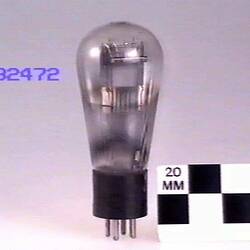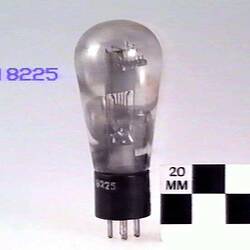Summary
Power output triode, introduced in 1925 to drive the then-new moving-coil loudspeakers. It could produce 1.6 watts but needed a 425 volt supply to do so. It was derived from the UV202 and was superseded by the UX250 in 1928 and the UX245 in 1929. The UX245 could produce the same output with a more convenient 250 volt supply and the UX250 could produce nearly 3 times the power with a 450 volt supply.
The UX210, later abbreviated to type 10, was popular as a small transmitting valve and as such continued in production until the mid 1940s as the 10Y with higher voltage ratings and the even higher rated types 801 and 801A. 7.5 volt directly heated cathode.
Physical Description
Internal structure of a power triode valve with its bulb removed. American 4 pin (UX) base. Mounted on display block with an intact example of the same type (ST 18225).
More Information
-
Collection Names
-
Collecting Areas
-
Acquisition Information
Purchase
-
Manufacturer
-
Inscriptions
Base: (RCA logo)/RADIOTRON/UX 210 Display block: TRIODE (Output) 210/R.C.A. Radiotron/(Brief description)
-
Brand Names
-
Classification
-
Category
-
Discipline
-
Type of item
-
Overall Dimensions
130 mm (Length), 35 mm (Outside Diameter)
Not including display block.
-
Keywords


